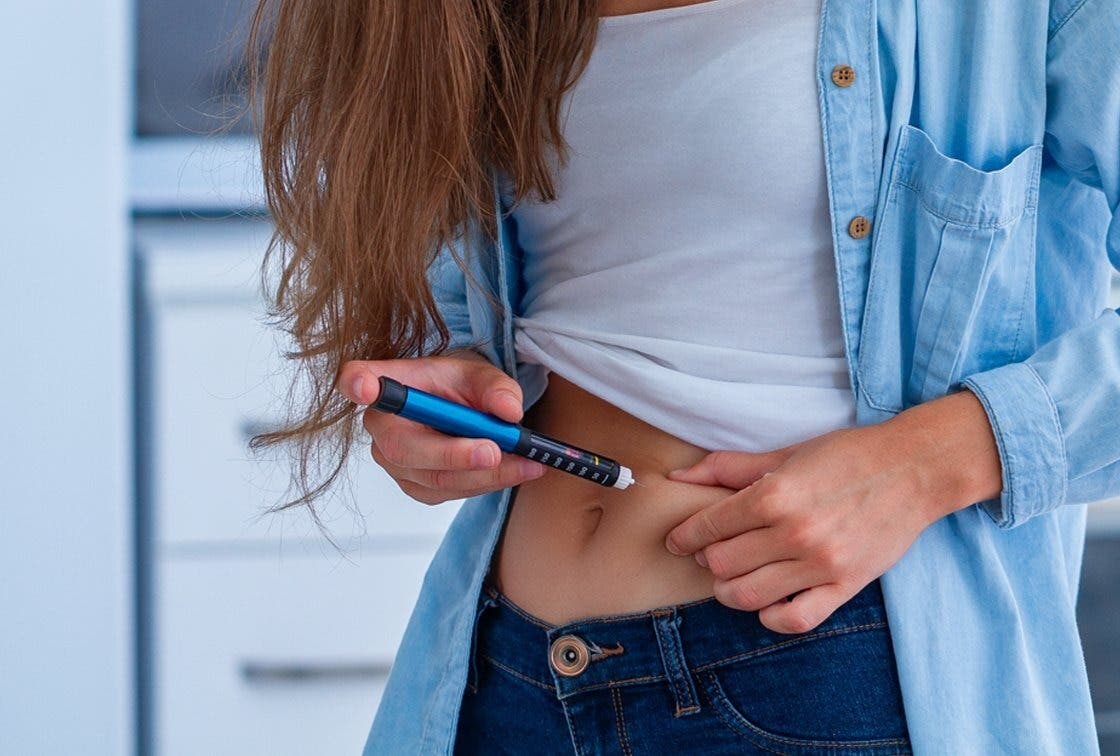Simple, one-hour, procedure eliminates the need for insulin for Type 2 diabetics
Type 2 diabetes affects more than 37 million Americans and over 90% of them have the condition.

Type 2 diabetes affects more than 37 million Americans and over 90% of them have the condition. (CREDIT: Creative Commons)
Electrical stimulations administered to the duodenum, the initial segment of the small intestine, might offer a one-time outpatient endoscopic procedure for Type 2 diabetes patients, potentially enabling them to sustain glycemic balance and discontinue insulin use, a preliminary study suggests.
This research was carried out at Amsterdam University Medical Center under the guidance of Celine Busch, a gastroenterology PhD student, and Jacques Bergman, M.D., PhD, a professor specializing in gastrointestinal endoscopy.
Type 2 diabetes affects more than 37 million Americans and over 90% of them have the condition. The traditional method of treating Type 2 diabetes involves taking glucose-lowering medication or injecting insulin, which has several side effects, including the risk of low blood sugar and weight gain.
However, this study could provide a potential improvement over drug treatment by offering a one-time outpatient procedure that provides glycemic control. “The potential for controlling diabetes with a single endoscopic treatment is spectacular,” Busch said.
Related Stories:
Previous research has explored the impact of ablation, using heat to modify the lining of the small intestine, after observing that patients who underwent gastric bypass experienced improved insulin control immediately after the surgery, even before any weight loss could occur. This indicates that bypassing this portion of the small intestine plays a role in glycemic control in Type 2 diabetes.
In this study, 14 patients underwent an hour-long endoscopic procedure in which alternating electrical pulses were delivered to the lining of the small intestine just below the stomach. After the procedure, patients were discharged on the same day and put on a calorie-controlled liquid diet for two weeks. Patients then began taking semaglutide, a diabetes medicine, titrating up to 1 mg a week.
Semaglutide on its own sometimes allows patients with Type 2 diabetes to quit taking insulin, but only in about 20% of cases. In this study, 12 of 14 patients, or 86%, maintained good glycemic control without insulin for a year, suggesting that the improvement is related to the procedure and not just the semaglutide. The authors are beginning work on a double-blind randomized controlled trial to test these results.
“This one procedure is ‘disease-modifying’ in that it reverses the body’s resistance to its own insulin, the root cause of Type 2 diabetes,” Bergman said. The researchers hypothesize that chronic exposure to a high-sugar, high-caloric diet results in an unknown change to the small intestine’s lining, making the body resistant to its own insulin.
The researchers believe rejuvenating the tissue in this part of the intestine improves the body’s ability to respond to its own insulin, particularly in patients with Type 2 diabetes whose bodies still produce some insulin.
While this study’s results are promising, the research is still in its early stages. The authors plan to continue their research with a double-blind randomized controlled trial to further test their results.
The Procedure
The procedure, called duodenal mucosal resurfacing (DMR), involves delivering electrical pulses to the lining of the duodenum, a portion of the small intestine. This method uses a specialized catheter that delivers electrical energy to the duodenal wall, creating a controlled injury to the mucosal layer. This process causes the tissue to regenerate and improve the body’s ability to respond to insulin.
DMR is performed under sedation and usually takes about an hour to complete. Patients can go home on the same day and start a calorie-controlled liquid diet for two weeks. After two weeks, patients begin taking semaglutide, a diabetes medicine, titrating up to 1 mg a week.
"DMR is a promising new therapy that could potentially help millions of people with Type 2 diabetes who struggle to manage their blood sugar levels with traditional medications," said Busch. "This one procedure is 'disease-modifying' in that it reverses the body's resistance to its own insulin, the root cause of Type 2 diabetes."
The study was fully funded by Endogenex, a Minnesota-based company that owns the technology used for the DMR procedure. Dr. Bergman serves on the advisory board of Endogenex, and the company has already begun working on a double-blind randomized controlled trial to test the results of the study.
Despite the promising results, some experts have raised concerns about the long-term safety and efficacy of the DMR procedure. Dr. Kenneth Snow, an endocrinologist and clinical professor of medicine at the University of Washington, told the New York Times that while the study is "encouraging," it is too early to tell whether the procedure will be a viable long-term solution for patients with Type 2 diabetes.
Duodenal mucosal resurfacing (DMR) is a novel endoscopic procedure that aims to achieve metabolic effects by intervening on the mucosal surface of the duodenum. The procedure is performed under fluoroscopic and endoscopic guidance by introducing a catheter with a balloon into the duodenum. (CREDIT: Creative Commons)
"Type 2 diabetes is a complex disease that requires a multifaceted approach to treatment," said Snow. "While the DMR procedure may provide short-term benefits, it remains to be seen whether it will be a safe and effective long-term solution for patients."
Other experts have also pointed out that the DMR procedure is not without risks, including the potential for bleeding, infection, and damage to surrounding organs. In addition, the procedure is currently only available at a limited number of medical centers around the world, which could limit its accessibility to patients in certain areas.
Despite these concerns, the researchers involved in the study remain optimistic about the potential of the DMR procedure to revolutionize the treatment of Type 2 diabetes.
"This is just the beginning of what could be a major breakthrough in the field of diabetes research," said Busch. "We are excited to continue studying the long-term effects of the DMR procedure and to explore new ways to improve the lives of patients with Type 2 diabetes."
Note: Materials provided by The Brighter Side of News. Content may be edited for style and length.
Like these kind of feel good stories? Get the Brighter Side of News' newsletter.
Joseph Shavit
Head Science News Writer | Communicating Innovation & Discovery
Based in Los Angeles, Joseph Shavit is an accomplished science journalist, head science news writer and co-founder at The Brighter Side of News, where he translates cutting-edge discoveries into compelling stories for a broad audience. With a strong background spanning science, business, product management, media leadership, and entrepreneurship, Joseph brings a unique perspective to science communication. His expertise allows him to uncover the intersection of technological advancements and market potential, shedding light on how groundbreaking research evolves into transformative products and industries.



